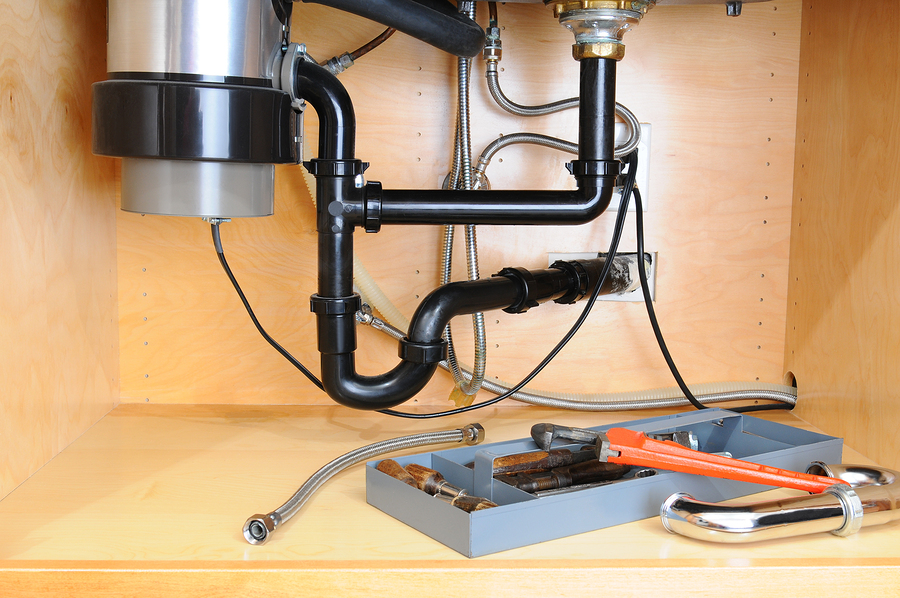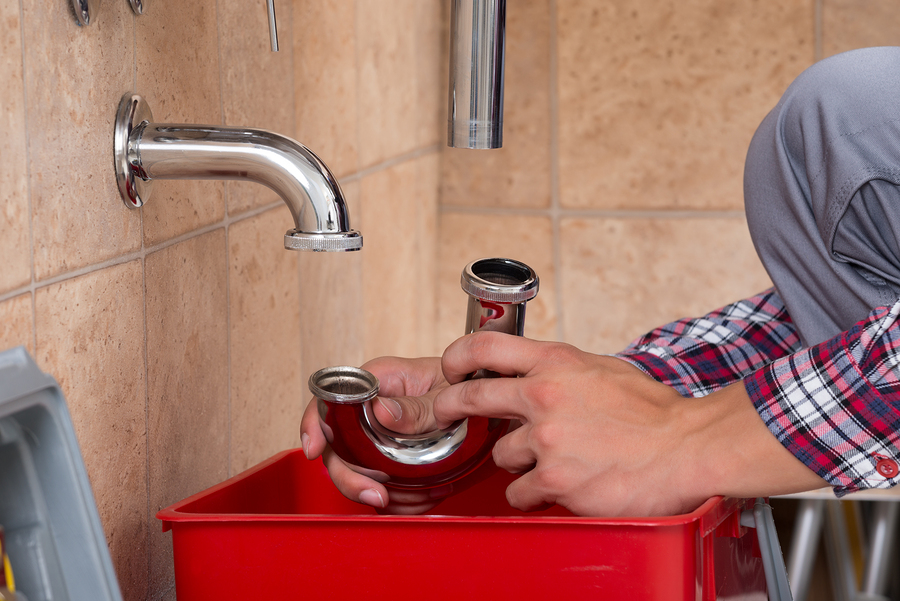Clogged Sink? Check the P Trap
Date: March 29, 2018
ARTICLES
CLOGGED SINK? CHECK THE P TRAP
MAR 29, 2018
Picture this: You are standing in front of your bathroom sink on a hectic Monday morning, trying your best to get ready and out the door as quickly as possible. And then, it happens. As you are going about your business brushing your teeth, you are met with ever-rising water in the sink and a drain that just will not function appropriately. You, my friend, have a clogged sink. So what are you to do? No way you have time to call up and wait for even the speediest plumber to get there. (Unless of course your significant other happens to be a plumber and is in the next room … in this case, why are you reading this article? Go and ask them!)
Luckily, the quick solution to fixing most clogs is a quick check and sweep of the P trap. Let’s break down what the P trap is, how it works and how you can clear it safely so that you can get on with your business and your day.
WHAT IS A P TRAP?
Even if you do not know what a P trap is, you have likely seen it before. Under your sink, it is the u-shaped piece of pipe that is immediately below the drain. The P trap is a required element of indoor plumbing that keeps odorous gases from working their way back up through pipes and creating a smelly (and potentially dangerous) situation in your home. Due to their structure, however, the P trap is especially prone to clogs and a common culprit for new clogs in your sinks. While it can be annoying, it is actually an overall benefit because it reduces the number of deep clogs further down in the system — those clogs that almost always require professional interference.
HOW DOES A P TRAP WORK?
As mentioned previously, the P trap is the u-shaped piece of pipe directly underneath your sink. Because of its shape, it holds standing water which blocks gases and odors from seeping back up the drain. So, as you can imagine, if a sink has not been used in a long time, that standing water can evaporate. A dry P trap means that gases are able to work their way back up the pipe. This is part of why it is so important to run sinks regularly.
Before we start, be sure to turn off the water going to the sink. While we are working on the drain, you never know when a child or significant other might pop in and unwittingly run the water causing an inconvenient mess. Better safe than sorry.
HOW TO CLEAR THE P TRAP SAFELY
Clearing a P trap isn’t too difficult at all, but you do need to follow a few steps to ensure it is done correctly. First, you need to loosen the holders that connect the P trap to the rest of the pipes. Make sure you have a bucket underneath the P trap while you are doing this. As previously mentioned, the P trap is effective because it retains standing water. Thus, when it is removed, do not be alarmed when some water comes out. Second, remove any solid debris that is easily accessible. Next we recommend using a brush to clean the trap thoroughly. Not only will that remove stuck-on debris you couldn’t get with your fingers, but using a brush also removes any mineral build-up that happens over time, restricting water flow. Since we’ve reached this point in the cleaning process, chances are you were cleaning it for a reason. Be sure to check both sides of the connecting pipes for any debris or blockages while the P trap is disconnected. Then, place the P trap back into position. These days most pipes are plastic, so while it is important to make sure the P trap is secure, do not over tighten it. The long side of the P trap always faces the drain. Once it is secured, run water for 10-15 seconds to ensure the P trap has water in it again and check for leaks, that’s it. You’ve successfully cleaned the P trap.
HELPFUL TIPS
While cleaning the P trap is not too difficult, there are ways to avoid having to take on this task. Basically, try not to put things down the drain that shouldn’t go down there. If there is hair in the sink from brushing, instead of washing it down the drain, grab a paper towel and wipe it out of the sink. If you’re someone who clips your nails over the sink, do the same thing – grab a paper towel and wipe them up. These simple tips can go a long way in preventing you from having clogs and, ultimately, from having to remove the P trap for cleaning.
Got a clog that still will not go away after following the steps outlined above? Get in touch with us right away. Whether it is an issue with a clog further down in your system or something else, we can accurately diagnose your plumbing problem and solve it for you in the most efficient way possible.


